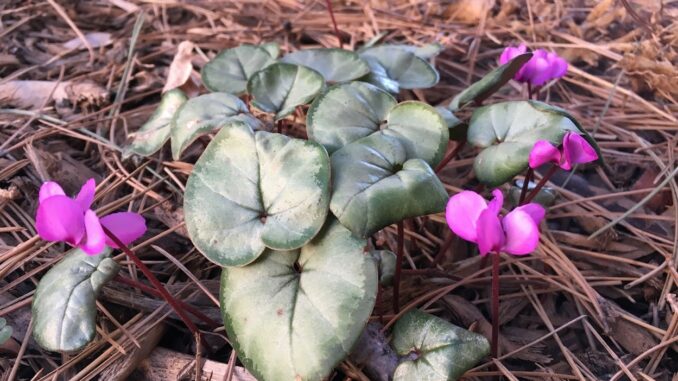

by Bryan Fischer | Gardens on Spring Creek
Dry shade represents one of the most challenging gardening situations on the Front Range. Most widely grown garden plants adapted to grow in the shade evolved to live in the shade of deciduous woods, which receive significant precipitation. Obviously, this creates a mismatch for much of our shade, which is dry due to our arid climate.
And the woody plants that create much of our shade actively pull what little water may be present in our soils for themselves, further exacerbating this mismatch. As a result, gardeners here often resign themselves to watering their shade gardens heavily – a costly and labor-intensive option, not to mention less than ecologically mindful – or settle for less-than-satisfying shady spaces. This doesn’t need to be the case! With a few simple changes and a plant palate tweak, shade gardens in our region can still feel lush and verdant without becoming burdens on our backs or checkbooks.
First, ditch the landscape fabric. If you don’t have it, don’t install it. If you have it removing it is a big job, but one that pays off, allowing better nutrients and mulch breakdown into the soil that will help it better retain moisture. Next, spread a thick (up to four inches) layer of wood or leaf mulch over the entire garden. You will need to re-mulch annually, but newer data also suggests that a three to five-inch layer of wood mulch provides excellent control of some weeds.
Then, adjust your plant palate. Consider ditching plants that routinely look crisped, with burned leaf edges or wilting. Adding a few shade-adapted woody plants can add structure to the space. Consider the native Rubus deliciosus (Boulder raspberry) and Ribes aureum (golden currant) for larger deciduous options, or the lightly running Berberis (Mahonia) aquifolium (tall Oregon grape holly) for an excellent broadleaf evergreen option. All three of these plants sport attractive blooms and berries relished by wildlife later in the season. Berberis (Mahonia) repens (Oregon grape holly) appears similar in look to Berberis (Mahonia) aquifolium but clocks in at one foot high, making it ideal for smaller spaces or bed edges.
As far as classic shade perennials go, Dicentra (bleeding heart) can be an option for gardens that receive some water. Pulmonaria spp. (lungworts) are typically better adapted to dry sites, as are Brunnera (bugbane). Both feature pleasant, though not astounding, spring flower displays and attractive, multicolored leaves while out of bloom. Gardeners seeking more unusual options should investigate hardy Cyclamen (including C. hederifolium, C. coum, and C. purpurascens), all of which feature bizarre, upside-down flowers and attractive, heart-shaped leaves. Don’t be surprised if they disappear midseason, as Cyclamen can be naturally summer-dormant.
I particularly enjoy using Epimedium (barrenworts) in my shade gardens, where their unusual, wing-shaped, serrated-edge leaves add a very interesting element to the space all season long. Some are even evergreen in mild winters! And, with clouds of fantastical, four-petaled, spider-like blooms bobbing on wiry stems in spring, there’s just nothing like them. At the risk of overgeneralizing, avoid pink forms – they’re often adapted to acidic soils. ‘Orange Queen’ has proven most successful for me.
As with all gardening, there will be setbacks, but savvy plant selection, thoughtful planning, and maintenance will hedge the bets in your favor.
Support Northern Colorado Journalism
Show your support for North Forty News by helping us produce more content. It's a kind and simple gesture that will help us continue to bring more content to you.
BONUS - Donors get a link in their receipt to sign up for our once-per-week instant text messaging alert. Get your e-copy of North Forty News the moment it is released!
Click to Donate